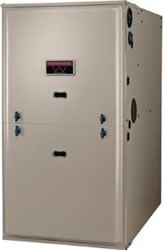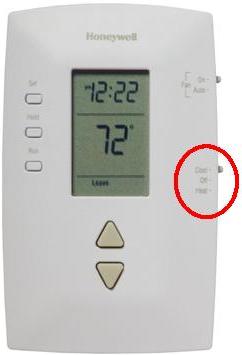There are many reasons that your gas furnace may not be working as well as it should be. This can result in rooms in your home being colder than they should be; no heat at all; and/or increases in energy costs to heat your home.

Figure 1 - Typical gas furnace
Your gas furnace operates by circulating the air in your home. It takes cold air in, filters it, heats it and then sends the hot air throughout the home, as shown in Figure 2.

Figure 2 - Gas furnace components
As long as everyone is comfortable in the home, very little thought is given to the gas furnace, yet it is a mechanical device and parts can wear out.
Gas furnaces can be purchased to operate on either natural gas or propane.
This article will aid you in troubleshooting the most common gas furnace problems that you may encounter.
The 7 most common problems associated with water heaters are:
- No hot air coming from your gas furnace
- Air coming from furnace is not hot
- The gas furnace cycles on and off to often
- Blower is always running
- Noisy gas furnace
- The pilot light has extinguished.
- Electronic Ignition
- No hot air coming from your gas furnace:
The most common gas furnace faults associated with no hot air are:

Figure 3 - Thermostat heat off cool switch
- The thermostat is set incorrectly and is not turning the furnace on.
- The thermostat is malfunctioning.
- Electrical power is not reaching the gas furnace control system.
- There is no gas getting to the furnace.
- The pilot light in the furnace has gone out.
Troubleshooting:
Look at the thermostat and make sure that it is set for "heat". Modern thermostats will have a three position switch located on the thermostat; Heat, Off, Cool, as shown in Figure 3.
Check the setting on the thermostat for the temperature that you desire in your home.
If you have an electronic thermostat, check the thermostat manual for programming and ensure that the thermostat is programmed properly.
On old style bi-metal thermostats remove the thermostat cover and ensure that the contacts are clean.
Check the circuit breaker or fuse to ensure that it has not tripped or blown.
Check the pilot light to ensure that is still lit.
Additional information on lighting the pilot light and on adjusting a pilot light flame.
